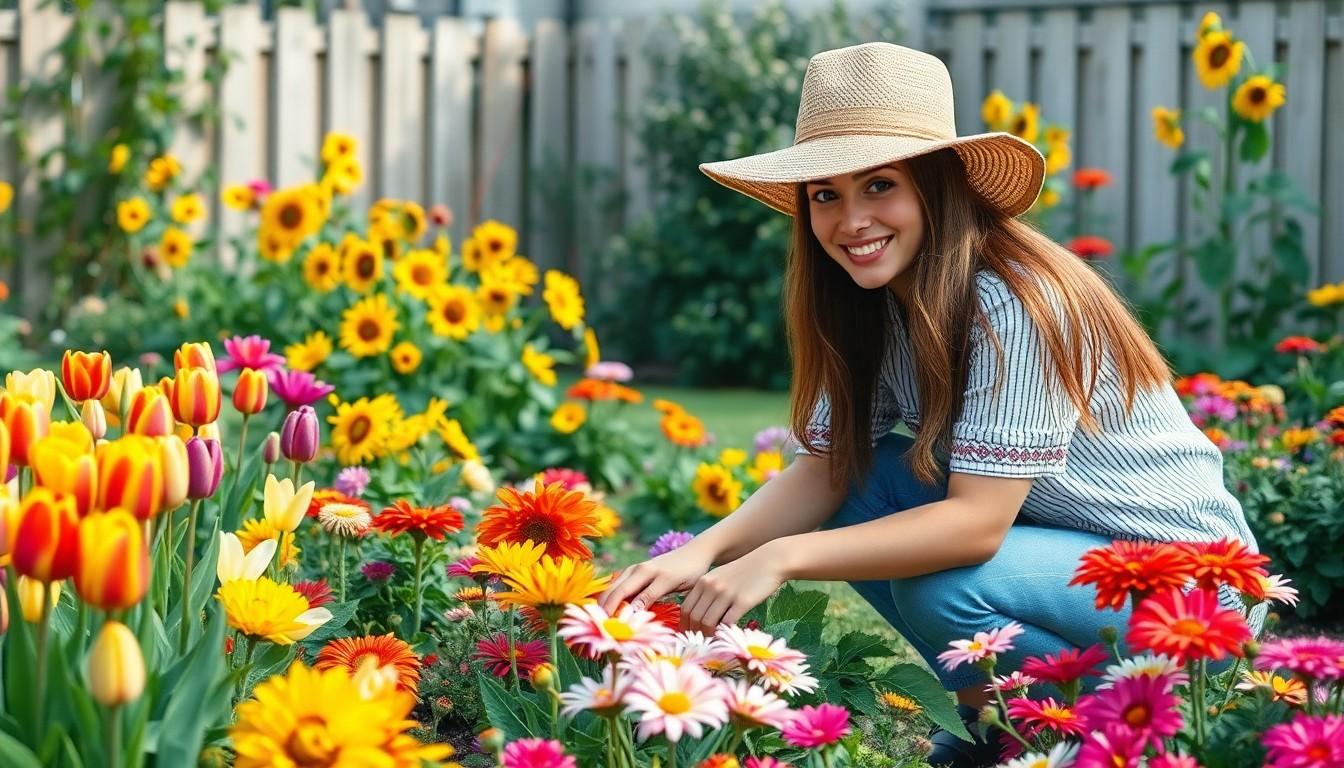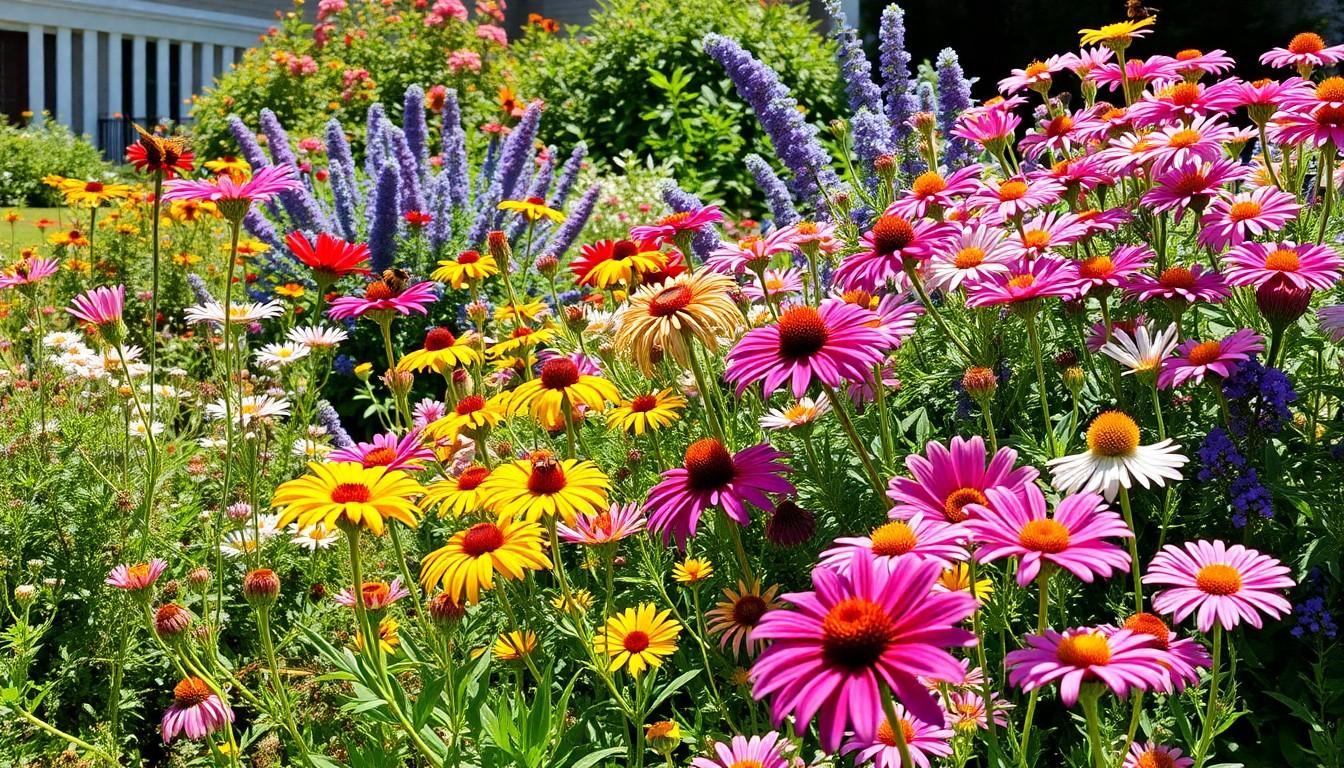The Best Fluffy Pancakes recipe you will fall in love with. Full of tips and tricks to help you make the best pancakes.

Flower Garden Design: Transform Your Backyard into a Vibrant Oasis
Creating a stunning flower garden is like painting a masterpiece, but instead of brushes and canvases, you’ve got soil, seeds, and a sprinkle of creativity. Imagine stepping into your backyard and being greeted by a vibrant tapestry of colors and fragrances that make even the most stoic neighbor green with envy. Flower garden design isn’t just about planting pretty petals; it’s about crafting an oasis that reflects personality and passion.
Flower Garden Design
Flower garden design encompasses essential principles that enhance the overall aesthetic. Implementing effective strategies helps create inviting and vibrant spaces.
Color Theory in Flower Gardens
Color theory plays a crucial role in flower garden design. Choosing a well-balanced color palette attracts the eye and establishes mood. Complementary colors create a sense of harmony, while contrasting colors add excitement. Seasonal flowers can provide a dynamic array of colors throughout the year. For instance, pairing yellow sunflowers with blue delphiniums produces a striking visual impact. Consider using varying shades of the same color for depth and interest.
Layout and Spatial Arrangement
Layout and spatial arrangement determine how flowers interact within the garden. Utilizing different heights can create layers that add dimension. Arranging plants in groups improves visual appeal and makes maintenance easier. Consider paths that guide visitors through the space, offering unique views of the flower combinations. Incorporating focal points, such as sculptures or birdbaths, enhances the garden’s design. Ensure that plants are spaced appropriately for growth and airflow. Thoughtful layout transforms the garden into a functional and aesthetic retreat.
Choosing the Right Plants

Choosing the right plants ensures a thriving garden that showcases beauty and longevity. Gardeners often consider different plant types for their design.
Perennials vs. Annuals
Perennials last multiple growing seasons, while annuals complete their life cycle in one season. They offer distinctive benefits for garden designs. Perennials provide long-term stability, blooming year after year with minimal replanting. Annuals, on the other hand, deliver vibrant colors and variety during their single growing season, perfect for changing themes. Selecting a mix of both can create visual interest throughout the year, as perennials contribute structure and annuals add splashes of seasonal color.
Native Plants and Their Benefits
Native plants flourish in local climates, requiring less maintenance and water compared to non-native varieties. They support local ecosystems by providing habitats for native wildlife such as pollinators and beneficial insects. Utilizing native plants fosters biodiversity, enriching the garden’s overall health. Furthermore, these plants adapt well to the soil and weather conditions, ensuring resilience. Gardeners can create sustainable landscapes while enjoying the many aesthetic benefits that native plants offer.
Designing for Different Seasons
Designing a flower garden involves considering seasonal changes to maintain visual interest year-round. Each season offers unique opportunities to feature different flowers and colors.
Spring Blooms
Spring brings vibrant life back to gardens. Tulips, daffodils, and hyacinths emerge, painting the landscape with bright hues. Incorporating early bloomers creates an inviting atmosphere. Consider layering these flowers with perennials that bloom later, ensuring continuous color. Spring gardens can also benefit from fragrant plants like lilacs, enhancing sensory appeal.
Summer Displays
Summer showcases a rich variety of flowers. Sunflowers, zinnias, and hydrangeas dominate landscapes, creating bold splashes of color. Grouping plants with varying heights enhances visual depth. Incorporating drought-tolerant varieties ensures sustainability during warmer months. Adding height with trellises can support climbing plants like morning glories, creating unique focal points while attracting beneficial pollinators.
Fall Highlights
Fall introduces a palette of warm colors. Asters, chrysanthemums, and ornamental peppers provide stunning displays. Mixing these with foliage plants like sedum keeps gardens vibrant even as temperatures drop. Emphasizing texture with grasses adds visual interest, while including late-blooming perennials ensures longevity in the garden. By utilizing plants that feature rich autumn hues, gardeners can create a captivating transition into winter.
Maintenance Tips for Flower Gardens
Maintaining a flower garden requires consistent effort for vibrant blooms and overall health. Proper techniques keep gardens thriving throughout the seasons.
Watering and Fertilizing
Watering plays a crucial role in plant health. Ensure a deep soak at least once a week, adjusting frequency based on rainfall. Early morning is the best time for watering, as it minimizes evaporation and fungal growth. Fertilizing should occur during the growing season. Choose a balanced, slow-release fertilizer every 4 to 6 weeks to promote healthy growth. Applying organic compost enriches the soil with nutrients and improves moisture retention. Monitor plants for signs of nutrient deficiencies, such as yellowing leaves or stunted growth. Tailoring care to specific plant needs enhances the garden’s beauty and longevity.
Pruning and Deadheading
Pruning encourages healthy growth and shapes plants. Remove dead or damaged branches to prevent disease and improve air circulation. Utilize sharp, clean tools for precise cuts, minimizing stress on plants. Deadheading, or removing spent blooms, promotes continuous flowering. After blooms wilt, trim the stem back to the nearest leaf node. Regular deadheading can lead to a more abundant display of flowers throughout the season. Maintain awareness of each plant’s growth habit; some benefit from more aggressive pruning, while others thrive with lighter touch. Consistent maintenance fosters a lush and inviting garden.
Creating a flower garden is an enriching journey that combines creativity and nature. By thoughtfully selecting plants and arranging them with care, one can craft a stunning landscape that reflects individual style. The right mix of perennials and annuals ensures year-round beauty while supporting local ecosystems.
Seasonal planning adds depth and interest, allowing gardens to evolve with the changing climate. With consistent maintenance and attention, these gardens can thrive and flourish, providing a vibrant escape. Embracing the principles of flower garden design not only enhances outdoor spaces but also fosters a deeper connection to nature.
